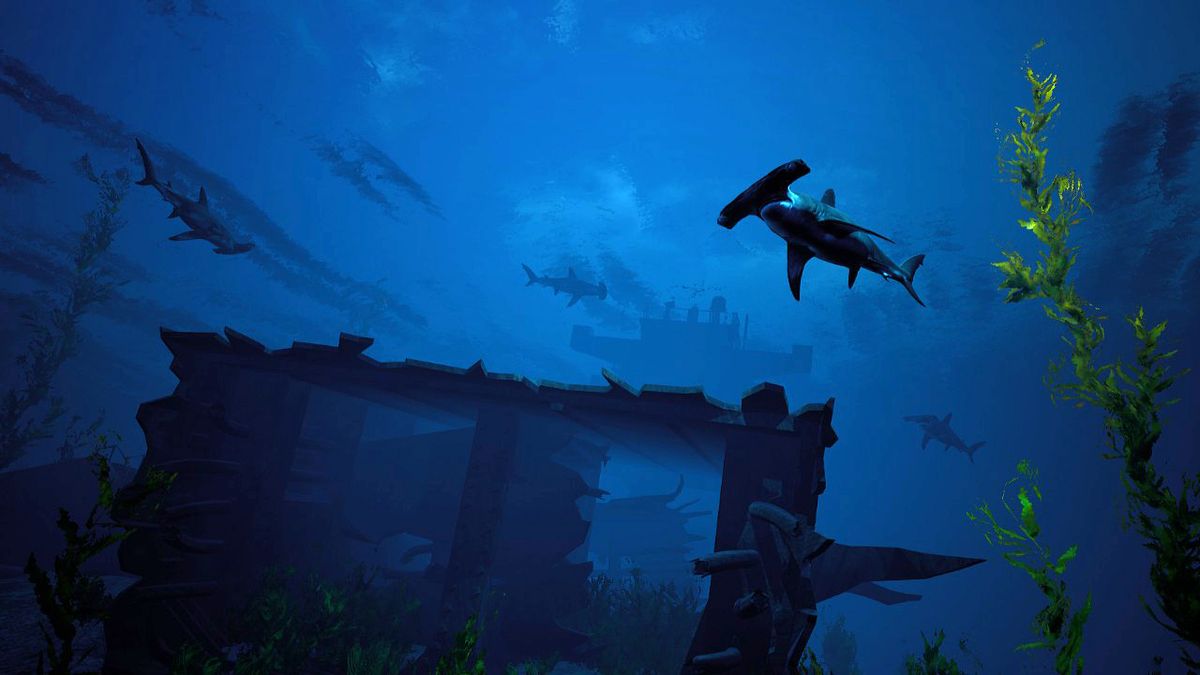
There have also been a couple of incidents with people bitten in aquariums. Many of the attacks seem to have involved spear-fishing where the shark has gone for the catch. That said they have been known to attack and they have been responsible for two deaths. In reality they are not tigers at all and relatively docile. The fact they are called ‘tigers’ and frequently roam the surfline putting them into contact with humans does not help their cause. Sand tiger sharks probably have a worse reputation than they deserve.

Despite looking terrifying, the teeth are designed for grasping small slippery prey such as fish and squid. There are three rows of long, sharp, pointy teeth which menacingly protrude from the sharks mouth. However, it is the ferocious looking teeth that tend to get people’s attention. The sand tiger shark grows to around 3.2 metres (11ft) in length and can weigh up to 160kg (350 lbs). They go by a number of names including grey nurse shark, ragged-tooth shark and blue-nurse sand tiger and are found in warm waters around the world. Sand Tiger Shark Photo: Thomas Malesįatalities: 2Many people are familiar with the sand tiger ( Carcharias taurus) as the large sharks you see when visiting an aquarium. The ISAF has 41 attacks by blacktip sharks on record, one of which was fatal. But they are frequent attackers, making up the highest percentage of shark attacks in Florida. What they lack in size they make up for in energy, often being seen leaping out of the water when chasing fish.īlacktip sharks are not generally regarded as being very dangerous to humans owing to their size. Generally blacktips are fairly small measuring less than 5ft (1.6m), however bigger specimens can reach up to 9ft (2.8m) and weigh over 100kg (220lb).

It gets its name from the black tips and fringes to its fins and tail. Blacktip Shark Photo: Albert Kokįatalities: 1The blacktip shark ( Carcharhinus limbatus) is both common and widely distributed throughout the tropical /subtropical shallows of the world. Whether this number reflects their potential danger is uncertain as they are an endangered species. It is also suggested that these may be more aggressive than other hammerhead species.Īs a group the hammerheads have been involved in 34 attacks over the years, one of which was fatal. Reaching a whopping 6+ metres (20ft), weighing up to 600kg (1,300 lb) and equipped with teeth similar to those of the bull shark there is no doubt the great hammerhead could easily inflict deadly injuries on a human. It does seem likely though that it is the great hammerhead shark ( Sphyrna mokarran) which are the most likely candidates. To most observers the different species are difficult to tell apart, especially when they’re biting your foot off. It is believed the strangely shaped head allows the shark better all round vision. Hammerhead Shark Photo: Barry Peters / Licenseįatalities: 1The hammerhead sharks are actually a family of sharks (Sphyrnidae) which range in size from less than a metre (3ft) to over 6 metres (20ft). Unlike many lists that just rank the sharks purely on the statistics, I have looked at the potential to do damage, aggression and habitats of the sharks to decide which pose the biggest threat to humans. Reports of victims bitten in two or half eaten by sharks the size of a school bus are always going to be at the back of many people’s minds as they dip their toe in the ocean.


Statistically it is incredibly rare for any species of shark to attack, but when they do the results can be so horrific that it is burnt into the popular psyche. In this article we will look at the weaponry and statistics to determine which are the most dangerous sharks in the world.Īfter sifting through the shark attack records held by the International Shark Attack File (ISAF) and the Global Shark Attack File (GSAF) it is clear that only a few species habitually attack people and that many of the other shark species need provoking before they will bite. Yet with around 400 shark species it is only a tiny minority that present any danger to humans. I would regard only three, possibly four, of all the species as “ man-eating sharks“. As apex predators many types of sharks are well equipped to inflict serious injury large, fast, powerful and armed with row upon row of razor sharp teeth these fish are finely honed killing machines. Few animals instill quite the same fear as sharks.


 0 kommentar(er)
0 kommentar(er)
